Flintknapping - introduction
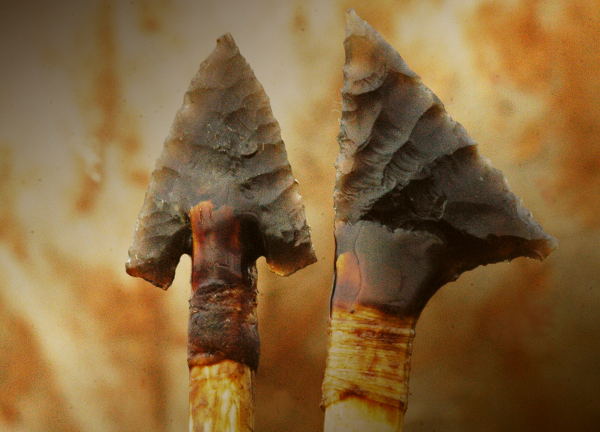
“There is something very satisfying in the knowledge that you could walk into the wilderness with nothing at all, pick up a piece of flint and a heavy rock, and make your own knife.” – Dan Sullivan
Contents
What is flintknapping?
Flintknapping is the art of making stone tools using a material capable of producing a conchoidal fracture, which generates a sharp edge on its circumference. A conchoidal (shell-like) fracture is one that doesn’t follow any predetermined plane due to the structure of the material, but depends entirely on the angle and force of the blow that caused it. Only a few stones can be worked in this way – for example basalt, chert or quartz. But best of all is flint, which formed the basis of stone-age technology.

Flint is formed on the sea bed, from the remains of sea creatures that have been altered by temperature and pressure. It passes through an ooze-like liquid stage which produces a tight molecular structure, like glass, after which most flint ends up held within chalk beds that protect it from the elements.
There is controversy about when our hominid ancestors first started using stone ‘tools’, but the oldest known intentional tools were from around 3.5 million years ago, found at Olduvai Gorge in Tanzania. The first stone tools were used to break open the skulls of prey animals to remove the nutritious brains. They would have been the only predators capable of doing this in a systematic way, which gave them an advantage that compensated for the lack of long, sharp teeth and claws. And this is where flintknapping came in – to provide razor-sharp weaponry to compete with the best of the big predators.
The hand-axe was the archetypal stone-age tool. It wasn’t used in the same way as modern axes – it was used mainly for cutting up carcasses. As stone is so resilient, there are thousands of examples of hand-axes, and the evidence shows that stone-age tools were quite sophisticated. Modern, unpractised people trying to create the same tools are more likely to end up with a pile of rubble than a razor-sharp axe.

Flintknapping was practised all over the world, wherever the right stone was found. In the UK, in Boxgrove, Sussex, the remains of animals, tools, stone flakes and even imprints in the ground showed where a Homo heidelbergensis individual knelt down to make a hand-axe to butcher the carcasses of rhino, mammoths and hyenas, over 500,000 years ago. Even that long ago, the axes found were quite sophisticated. Antler parts were found that comprise a toolkit to make a special kind of ‘tranchet’ hand-axe. Axes were found that were ovate biface (oval-shaped, tapering at the edges), with a razor-sharp edge cast all the way down one side from the tip.
There are over 500 hand-axes from Boxgrove in the British Museum, but things got more exciting in Norfolk, where sediments from a palaeolithic (old stone age) river bed were found to contain flint tools from over 750,000 years ago, and at the coast, tools were found from around a million years ago.
As time passed, tools became more sophisticated. In the neolithic (new stone age) period, we find evidence of axes being made that look much like modern axes, ground flat with sandstone. Some are so perfectly ground that it’s been estimated that over 100 hours work went into them. I suppose it was cutting edge technology at the time, and there were geeks even then. At the same time, lots of different microlithic tools (very small stone tools; lithic = stone) were being made, such as needles, fish hooks, toggles, scrapers for tanning skins and burins (thin engraving tools).

There were even flint trepanning kits. Trepanning is basic brain surgery. Pieces of skull were removed in an attempt to cure migraines or epilepsy, or to allow blood to escape after a blow to the head. A 55,000-year-old skull was found in the Rhyn Valley in France, of a man who had endured two trepanning episodes, before being killed by the third.
Stone tools were in widespread use well into the Bronze Age and even the Iron Age, and today they are still in use in parts of the Amazon and Papua New Guinea. In fact stone tools are used in modern surgery on internal organs – obsidian blades are softer than flint, but extremely fine and sharp, which allows the organ to heal more cleanly and easily.
What are the benefits of flintknapping?
Flintknapping is of great archaeological interest; there is little other evidence of ancient lifestyles as most possessions were perishable
Learning flintknapping provides a window into the past, but in an experiential way; it’s incredible to go through a set of operations that you know were performed perhaps half a million years ago – i.e. before there were humans! And they would have been better at it than you.
It also allows us to make useful, free and natural tools today (see below) – tools that involve no environmental damage in their manufacture, use or disposal
In a survival situation, with no other tools or weapons, it may well be a skill that keeps you alive
It can also be a very therapeutic activity, involving rhythmic movements whilst slowly observing a useful item appear from a natural piece of stone

What can I do?
You can’t learn flintknapping by reading about it, unfortunately. The first thing to do is attend a course. It’s best to have a vision of what you want to make before you start, rather than haphazardly working to see what emerges. That way you can visualise the finished item in the stone that you choose and work with.
Flint, or other suitable stone, is readily available in many parts of the world, especially in sea cliffs or river beds, but also in chalk landscapes anywhere. You could also ask at a local quarry about what kind of stones are found in your area. In the UK, flint is found south-east of a line drawn roughly from Lincolnshire to Portsmouth. Where it doesn’t exist there are often alternatives – for example greenstone in Cornwall and Cumbria. You can also buy flintknapping kits with the tools and materials you need to start.

When working, as you strike the edge of a stone, a shockwave is sent through the material that produces large, thick chunks when hit slightly away from the edge with a hard hammer (e.g. quartzite) and small, thin flakes when struck directly on the edge by a soft hammer (e.g. antler). Pressure flaking can also be used to refine or sharpen the piece, using bone, antler or even wooden tools to apply pressure (rather than striking) to remove small fragments, holding the stone in the palm of the hand with a piece of leather or a glove for protection.
It takes a lot of practice, but when you get used to it you can start making axes, daggers and then arrowheads and even fish hooks. Quite sophisticated arrowheads with barbs on each side, and a tang in the middle can be made by pressure flaking.
Our partner Will Lord makes flint axes and blades sharp enough to fell trees and to butcher carcasses. He also makes daggers, spears and bows & arrows that, in a survival situation, could be used to catch rabbits, fish or deer. However, in combination with natural cordage, his survival toolkit increases in usefulness dramatically, as he is able to bind axe heads and dagger handles, and make things like nets and traps.

Once you can make a serviceable tool, you can begin to bind the flint to pieces of wood to make more useful tools. Arrow- or spear-heads can be fixed with a natural glue made of pine pitch, beeswax and ground charcoal, then bound with the tendon from the lower leg of a deer. Beaten into fine fibres, this is the strongest natural binder there is for arrowheads.
Knapping techniques can also be used to shape pieces of flint for use in flint and lime walls.
Specialist(s)
Thanks to Will Lord Prehistoric Experiences for information.
The specialist(s) below will respond to queries on this topic. Please comment in the box at the bottom of the page.
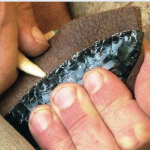
Bob Turner is a prehistory archaeologist, flintknapping specialist and course lecturer. Bob has run flint courses for several universities and local colleges and at Butser Iron Age Farm. His book Flintknapping: how to make you own stone age tool kit is now in its second edition and gives instructions on all aspect of tool making for both the beginner and the more experienced. Bob is also involved in field archaeology and flint tool identification and work with several museums. He is happy to identify any flint tool finds at no cost.

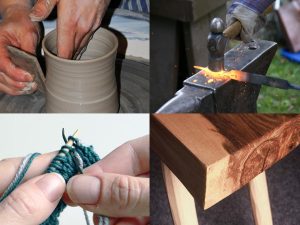
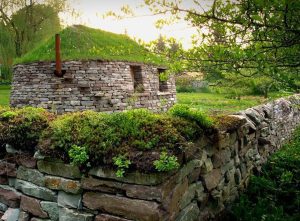
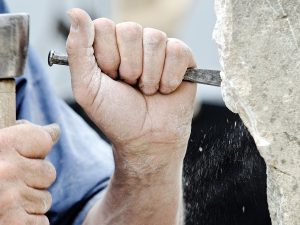
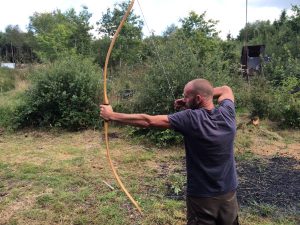
6 Comments
Hi, when are you running another flint knapping workshop?
Click on Will Lord’s link above to see course dates.
Hi Luke, apologies for the delay in responding. We have a flint knapping course available on Sunday 20th November if you are still interested in booking a place. Please just go to http://www.will-lord.co.uk, shop, workshops, flintknapping and select the available date. All the best Sarah
Hello, my son (10) is really interested in flint knapping. Is he old enough to attend a course?
Hi Catherine. You’d have to check with individual course providers. See the courses section, under resources, top right.
Dear Mr Turner
I am responding to your offer to identify flint tools. I have found 2 flint tools at Greywell, Hampshire which I cannot place in context.
One is a small scraper that seems to have some of the attributes of a Levallois flake, and the other is a bifacially worked core tool.
If you are still able to offer advice, I could send you photos, or better still I could briefly show them to you next time you are at Butser.
If you would send me details of an organisation/ charity which you are interested in, I should like to donate £30.
Best wishes
Chris Bullman